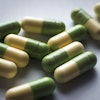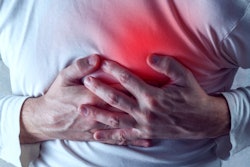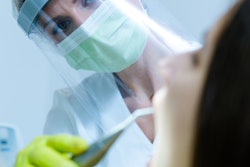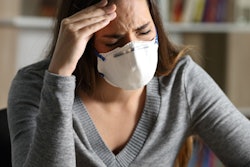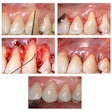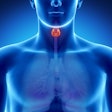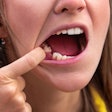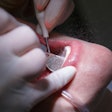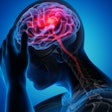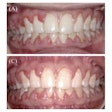
Medical imaging has helped show that SARS-CoV-2 infection could be accelerated through dental plaque and gum inflammation, according to an April 20 paper in the Journal of Oral Medicine and Dental Research.
SARS-CoV-2 may pass into the body through an oral-vascular-pulmonary track rather than an upper airway path -- and poor oral hygiene could speed this journey, wrote a team led by Dr. Graham Lloyd-Jones of Salisbury District Hospital in the U.K.
"Saliva is a reservoir of SARS-CoV-2, thus any breach of the immune defenses of the mouth may facilitate entrance of the virus to the vasculature through the gingival sulcus or periodontal pocket," the group noted. "From the oral vasculature, the virus would pass through veins of the neck and chest, and reach the heart. ... We propose that dental plaque accumulation and periodontal inflammation would further intensify this pathway. Therefore, it is suggested that daily oral hygiene and oral healthcare should be prioritized as such measures could be potentially lifesaving for COVID-19 patients."
Despite much research, it's still not completely clear why COVID-19 varies in severity from patient to patient, according to Lloyd-Jones and colleagues. It's also unclear exactly how the virus makes its way into a person's body. A key hypothesis is that it enters through the upper airways, but radiological evidence from computed tomography (CT) exams doesn't necessarily bear this out.
"Pulmonary radiological findings in COVID-19 do not align with a model of SARS-CoV-2 infection primarily causing disease of the airways of the lungs; the initial and dominant pathological features demonstrated radiologically are vascular in nature," the group wrote.
Even the much-cited ground-glass opacities found on CT are not necessarily specific to COVID-19 and again point to the effect of the disease on the vascular system.
In their paper, the authors outlined a hypothesis for the infection pathway for SARS-CoV-2:
- The virus passes from saliva across the gums and into the blood.
- It moves down blood vessels of the neck and chest to the heart.
- It is pumped from the heart into the pulmonary arteries and delivered to the small vessels of the lung peripheries.
- The virus binds with the endothelial angiotensin-converting enzyme 2 (ACE2) receptor, which results in an increase in the hormone angiotensin II.
Higher levels of angiotensin II lead to vasoconstriction, immunothrombosis, and vascular congestion, and vascular congestion leads to abnormally dilated blood vessels, according to the authors. Endothelial dysfunction leads to ground-glass opacification.
"Simply put, if the virus could pass from saliva or the [subgingival] periodontal environment into the venous drainage of the mouth, it would first be delivered directly to the small vessels of the lung periphery," the authors wrote. "This is exactly where immunothrombosis occurs."
The mechanism of viral transmission from the oral cavity to the lungs could explain both the radiological appearances and the clinical variability of the disease, Lloyd-Jones and colleagues wrote.
"Poor oral health could act as a risk factor to identify individuals more likely to develop COVID-19 lung disease, or those who might progress to severe disease leading to intensive care admission, mechanical ventilation, or death," they wrote.
Could the effects of COVID-19 be mitigated by a simple intervention such as the regular use of mouthwash? Perhaps, the authors wrote. The group cited a study by Marouf et al published recently in the Journal of Clinical Periodontology that showed an association between periodontitis and COVID-19 complications, intensive care admission, and the need for assisted ventilation.
"If this proposed pathological pathway is verified, it would be hugely significant in terms of understanding disease management," the authors concluded. "Simple, low-cost measures, such as the use of specific mouthwashes, could decrease the salivary viral load, and help prevent or mitigate the development of lung disease and severe COVID-19."
